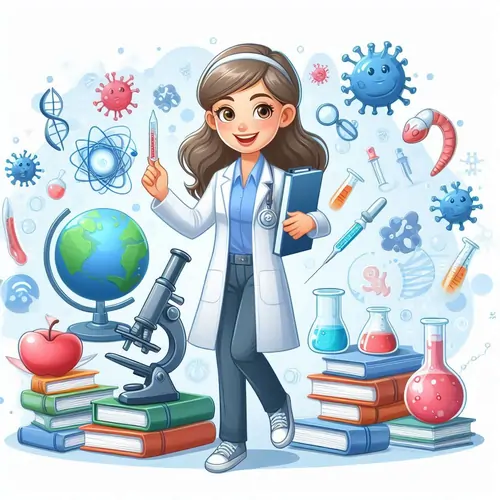Excelling in Biotechnology and Genomics with Core Concepts and Critical Analysis

Biotechnology and genomics are rapidly advancing fields that play a crucial role in modern science and medicine. University students often face challenging in biotechnology assignment that require a deep understanding of both theoretical concepts and practical applications. This guide is designed to help students navigate their biology assignment in biotechnology and genomics, providing insights into key topics and critical thinking approaches.
Understanding Key Concepts in Biotechnology and Genomics
Biotechnology involves using biological systems or organisms to develop products and technologies, while genomics focuses on the comprehensive study of genomes, the complete set of DNA within an organism. Here are some fundamental concepts that frequently appear in assignments:
- Genetic Modification (GMOs): Genetically Modified Organisms (GMOs) are created by altering their genetic material. This can involve introducing recombinant DNA into an organism, which is DNA that has been artificially combined from different sources. The primary methods include using restriction endonucleases to cut DNA, inserting foreign genes, and overexpressing proteins in organisms like E. coli. These techniques allow scientists to enhance desirable traits in plants, animals, and microorganisms.
- Gene Therapy: Gene therapy is an innovative approach used to treat or prevent diseases by introducing, removing, or altering genetic material within a patient’s cells. This technique is particularly promising for curing inheritable diseases by targeting specific tissues. For example, in gene therapy, vectors such as viruses are often used to deliver new genes into cells, enabling the production of proteins that can combat diseases.
- Molecular Cloning: Molecular cloning is a laboratory method used to replicate specific DNA sequences. It involves inserting a DNA fragment into a vector, such as a plasmid, and introducing it into a host organism. This method is crucial for producing recombinant proteins, such as insulin, which is synthesized using recombinant DNA technology. Insulin produced in this way is identical to human insulin and is used to treat diabetes.
- Bioinformatics and Genomics: Bioinformatics is the use of computational tools to manage and analyze biological data. In genomics, it plays a vital role in sequencing and interpreting DNA and RNA sequences. Whole-genome sequencing, for example, can identify genetic variations that may contribute to disease, aid in the development of personalized medicine, and provide insights into evolutionary biology.

Applying Knowledge to Real-World Scenarios
Assignments often test your ability to apply theoretical knowledge to practical scenarios. Here’s a deeper dive into how you might approach complex questions and topics:
- Bt Toxin and Genetic Engineering: Bt toxin is an example of a genetically engineered product used in agriculture. It is an organic insecticide produced by the bacterium Bacillus thuringiensis. This protein is toxic to certain insect pests, making it a valuable tool in integrated pest management. Understanding its application and safety is essential for addressing questions on genetically modified crops.
- The Flavr Savr Tomato: This genetically modified tomato was developed to have a longer shelf life and better flavor by inhibiting the production of enzymes that cause rotting. This example illustrates how genetic engineering can enhance agricultural products.
- ESTs and Genomic Mapping: Expressed Sequence Tags (ESTs) are short DNA sequences that are part of an expressed gene. They are used in genomic mapping to locate and identify genes, providing a foundation for further research in functional genomics.
Critical Thinking and Advanced Topics
Critical thinking questions in assignments often require a more nuanced understanding and the ability to synthesize information. For example:
- Southern Blotting: This technique is used to detect specific DNA sequences in a sample. It involves fragmenting DNA, separating it by gel electrophoresis, transferring it to a membrane, and hybridizing it with a labeled DNA probe. This method is fundamental in molecular biology for studying gene structure and function.
- Gene Introduction in Plants: Scientists use various methods to introduce new genes into plants, such as Agrobacterium-mediated transformation, gene guns, and CRISPR/Cas9 gene editing. These techniques are vital for developing crops with improved traits, such as herbicide resistance or enhanced nutritional content.
Conclusion
Tackling assignments in biotechnology and genomics requires a solid grasp of fundamental concepts and the ability to apply this knowledge critically. By understanding key topics like genetic modification, gene therapy, molecular cloning, and bioinformatics, students can approach their assignments with confidence. Engaging with critical thinking questions and exploring real-world applications will further deepen your understanding and prepare you for future challenges in these dynamic fields.
For additional support, consider utilizing online resources, study groups, and tutoring services. These can provide further explanations, practice questions, and guidance to help you excel in your studies. Remember, consistent study and active engagement with the material are key to mastering biotechnology and genomics.